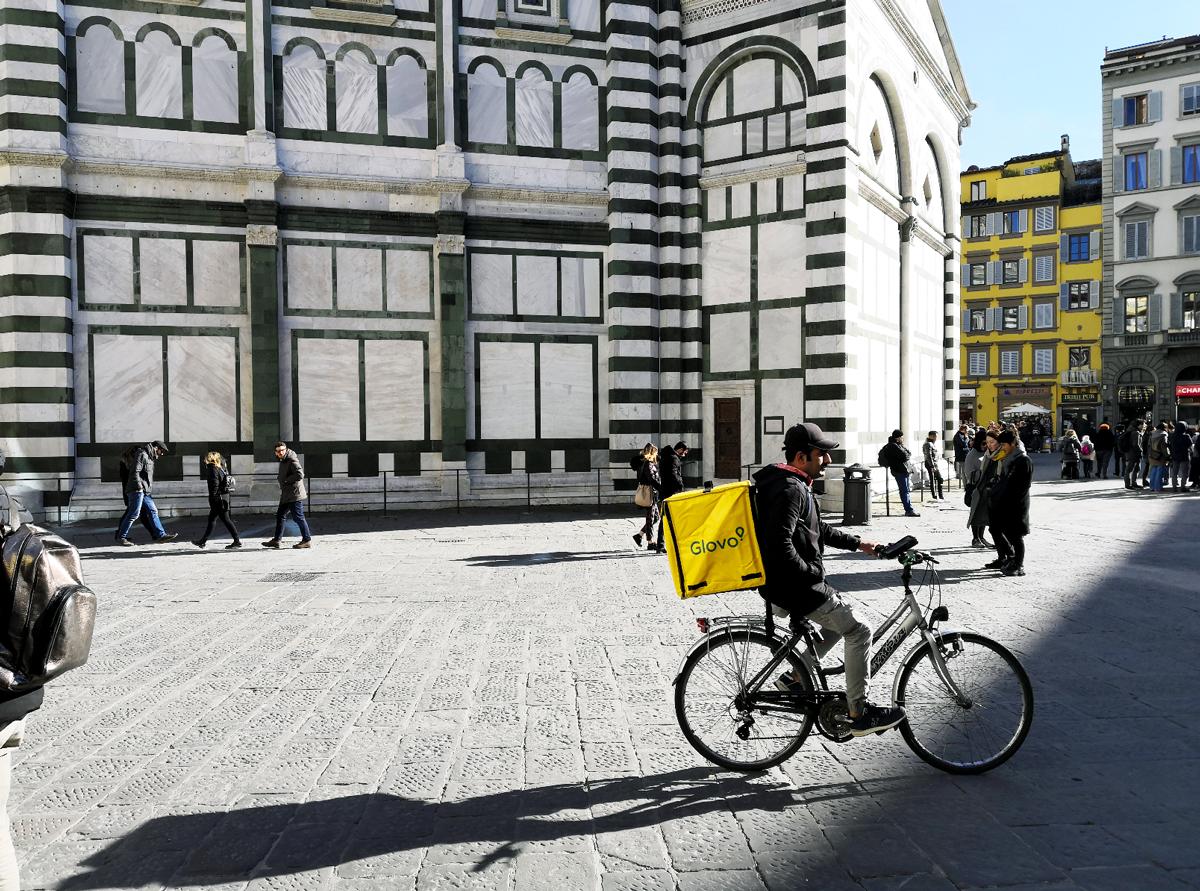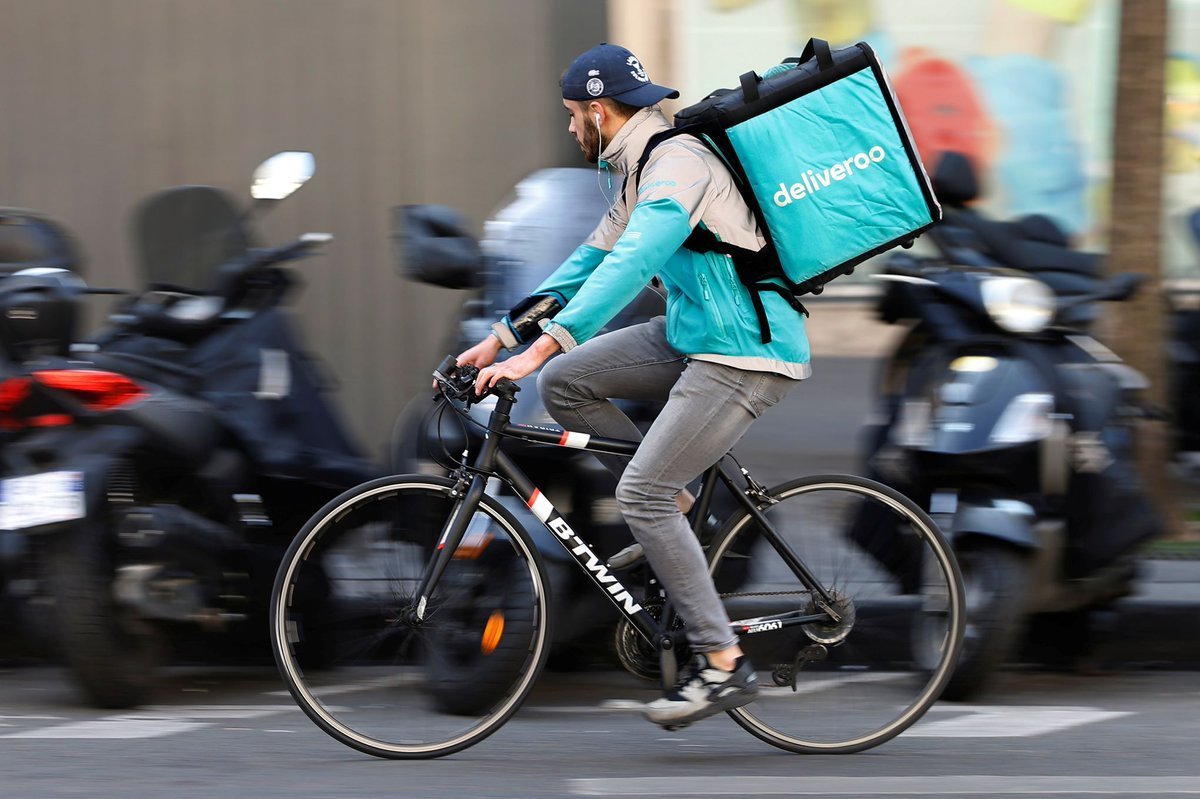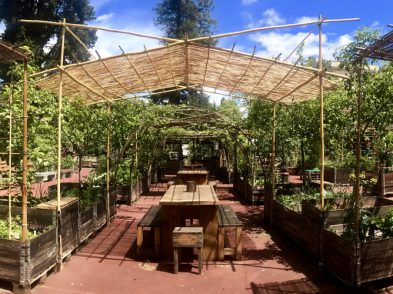Not long ago, even in the larger cities on the Italian peninsula, the concept of ordering take-out that wasn’t pizza was alien. In the last two years, there has been an invasion of reflective jacket-wearing superhumans who bike to our homes and offices with steaming parcels of curry and noodles. You can see them in a pre-dinner slow spot, grouped together in a square soaking up the sun before the evening rush. In this industry where timing is everything, booking delivery on a weekday lunchtime means you might go hungry. After all, there are only so many riders to go around, which begs us to ask: why is there suddenly such a high demand for someone to bring you your grub in Florence?
Deliveroo, just one of the many food courier services available, was founded in 2013 in London by William Shu from a startlingly simple idea. The start-up head couldn’t understand how there were countless good restaurants in the British capital, but none delivered. Six years and 500 cities in 13 countries later, Deliveroo has set a precedent the world over for fast delivery service. In Italy since 2015, its presence is headed by a Milan office, which saw a twofold increase in employees in 2018. Glovo (which purchased Foodora Italia in 2018), a similar service that also delivers non-food items, is a Spanish start-up established in 2015 with offices in Milan and Rome, as well as a similarly large number of “riders” on the ground, around 2,500, in most major Italian cities. December 2018 brought the acid-green Uber Eats riders to Florence, the American transportation giant’s tenth Italian city.

With the customer at the heart of these delivery services, business is booming: there are 5.8 million users in the country, predicted to rise to eight million by 2023 (source: statista.com). Following conversations with young Italians, mostly resident in Florence, the general opinion supports these numbers as most quote their appreciation for the apps and the ease and speed with which they can order their lunch or dinner. Many claimed that it was a service mainly used by people aged 20–25, when in fact usage is shared across age groups, up to 44 years. In 2017, 35–44 year-olds occupied 27 per cent of the user share, 25–24 year olds 25 per cent and 21.5 per cent of 18–14 year olds used online food delivery services. (Source: statista.com).
But as with most discussions about food, emotion and personal association are never far away. Most, if not all, of those who answered my questions recalled the culture around ordering pizza in their family homes. Ordering pizza before apps and instant payment has always been a part of Italian domestic life, a practice imbued with the fondest of memories. If a habit of ordering in, albeit, a very specific dish, is so ingrained in everyday household activity, why shouldn’t that dish be substituted with another increasingly foreign and diverse delicacy, mirroring modern Italian society?
In recent years, the choice and quality has increased exponentially as has the range of clients. Lurking outside the All’Antico Vinaio, a well-known spot for food delivery riders, I hounded some “Glovers”, who told me that there is no typical customer for these services. With little time to observe or remember who is reaching out their front door for their burrito, the customers become as uniform and homogenised as the riders themselves. In financial terms, the job is perfect for students or to supplement another income source, but wages are heavily taxed and earning more than 5,000 euro a year means handing over extra to the Agenzia delle Entrate. The positives? No prior experience is needed and drivers can manage their hours and shifts. But with red-tape financial limitations on earnings, employee loyalty can be low with many riders working for under a year before moving on.

How do these food delivery apps affect restaurants and Florence’s economy? Speaking to Pierluigi Urbini, the owner of restaurant and cocktail bar Plaz, it emerged that these services are fundamental for the industry: “If you don’t do it, you’re making a mistake.”
He continued by remarking that it’s nevertheless a shame to miss out on meeting people who would otherwise come into the restaurant, giving employees and himself the chance to converse and interact. Urbini mentions one delivery service provider that he wouldn’t use, saying that their lateness and quality of service reflects badly on his business, before indicating the obvious percentage of the order that goes back to the delivery provider. On the industry side of things, there are positives and negatives, but Urbini makes it clear that there is a necessity to include these services in your business: “The restaurant sector is changing, and this is part of that change.”
There are, of course, more than two sides to any story and, in the end, we find ourselves wondering who is winning in this new world of food on-the-go? For restaurants, the commissions applied by delivery companies (between 20 and 25 per cent) have an undeniable impact on revenue, especially in the case of high volume. On the other hand, delivery opens up new markets, especially for restaurants forced to open in peripheral areas due to Florence’s recently imposed regulation for the protection of the historic city centre. For riders, it provides a reasonable cash supplement as a part-time job, but appears not to be a viable stable option. The delivery providers seem to be in it for the win, cashing in on percentages. But with increased competition between apps and a finite market, it remains to be seen if the business model will continue to be sustainable for the restaurants and riders.








